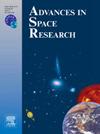A landslide susceptibility modeling method using an optimal parameters-based geographical detector
IF 2.8
3区 地球科学
Q2 ASTRONOMY & ASTROPHYSICS
引用次数: 0
Abstract
Current methodologies for modeling landslide susceptibility using machine learning algorithms typically involve grading landslide conditioning factors, selecting major factors, and calculating model input data. However, these approaches are often highly subjective and random, requiring sequential, step-by-step calculations that significantly reduce modeling efficiency. To address these limitations, this study proposes a novel landslide susceptibility modeling method based on an Optimal Parameters-based Geographical Detector (OPGD). Leveraging the theory of spatial stratified heterogeneity, the proposed method determines the optimal grading strategy for conditioning factors and ranks the importance of all factors. Furthermore, this study introduces risk detection metrics derived from the OPGD model as inputs to the susceptibility model, enabling simultaneous factor grading and model input data calculation. The effectiveness of the proposed approach is validated through six models based on two machine learning algorithms—Random Forest (RF) and Support Vector Machine (SVM)—across three regions of the Loess Plateau. The results demonstrate that the proposed method achieves exceptional landslide prediction performance, with AUC values consistently close to or exceeding 0.9. Notably, the RF-based model outperforms others, achieving a maximum AUC value of 0.978. The proposed method is not only straightforward to implement but also provides an interpretable modeling process, making it applicable to any region requiring landslide susceptibility analysis. Overall, this study significantly enhances modeling efficiency, bridges the gap between theoretical knowledge and practical applications, and advances the standardization of landslide susceptibility modeling.
基于最优参数地理探测器的滑坡易感性建模方法
目前使用机器学习算法建模滑坡易感性的方法通常包括对滑坡条件因素进行分级、选择主要因素和计算模型输入数据。然而,这些方法通常是高度主观和随机的,需要连续的、逐步的计算,这大大降低了建模效率。为了解决这些局限性,本研究提出了一种基于最优参数地理检测器(OPGD)的滑坡敏感性建模方法。该方法利用空间分层异质性理论,确定条件因子的最优分级策略,并对各因素的重要性进行排序。此外,本研究将从OPGD模型中导出的风险检测指标作为敏感性模型的输入,实现了因子分级和模型输入数据计算的同时进行。通过基于随机森林(RF)和支持向量机(SVM)两种机器学习算法的6个模型,在黄土高原3个地区验证了该方法的有效性。结果表明,该方法取得了较好的滑坡预测效果,AUC值始终接近或超过0.9。值得注意的是,基于rf的模型优于其他模型,最大AUC值为0.978。该方法不仅实现简单,而且提供了一个可解释的建模过程,使其适用于任何需要进行滑坡敏感性分析的地区。总体而言,本研究显著提高了建模效率,弥合了理论知识与实际应用之间的差距,促进了滑坡易感性建模的规范化。
本文章由计算机程序翻译,如有差异,请以英文原文为准。
求助全文
约1分钟内获得全文
求助全文
来源期刊

Advances in Space Research
地学天文-地球科学综合
CiteScore
5.20
自引率
11.50%
发文量
800
审稿时长
5.8 months
期刊介绍:
The COSPAR publication Advances in Space Research (ASR) is an open journal covering all areas of space research including: space studies of the Earth''s surface, meteorology, climate, the Earth-Moon system, planets and small bodies of the solar system, upper atmospheres, ionospheres and magnetospheres of the Earth and planets including reference atmospheres, space plasmas in the solar system, astrophysics from space, materials sciences in space, fundamental physics in space, space debris, space weather, Earth observations of space phenomena, etc.
NB: Please note that manuscripts related to life sciences as related to space are no more accepted for submission to Advances in Space Research. Such manuscripts should now be submitted to the new COSPAR Journal Life Sciences in Space Research (LSSR).
All submissions are reviewed by two scientists in the field. COSPAR is an interdisciplinary scientific organization concerned with the progress of space research on an international scale. Operating under the rules of ICSU, COSPAR ignores political considerations and considers all questions solely from the scientific viewpoint.
 求助内容:
求助内容: 应助结果提醒方式:
应助结果提醒方式:


